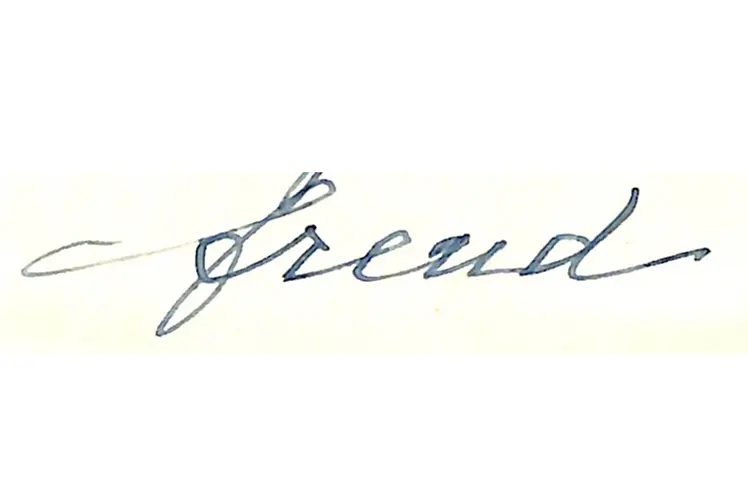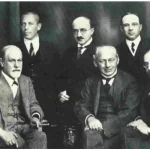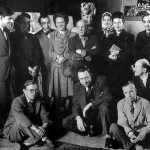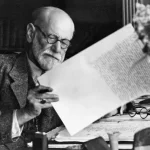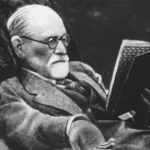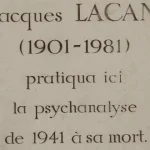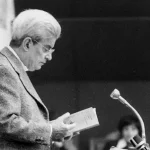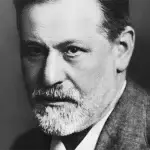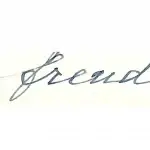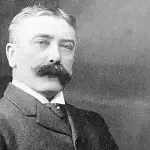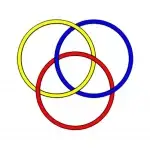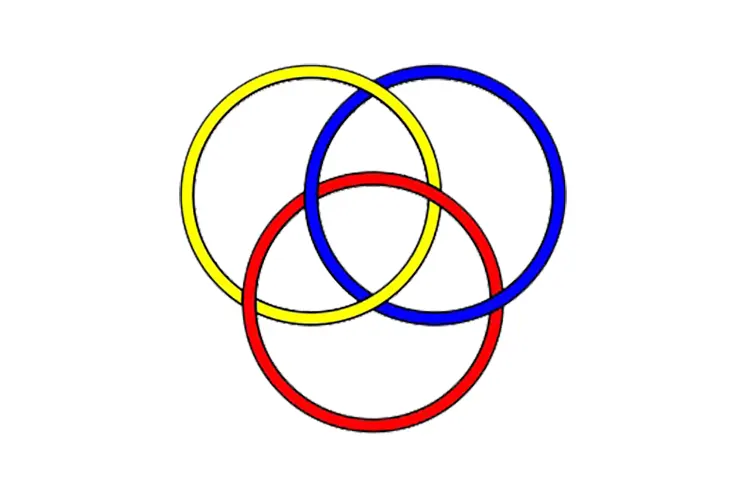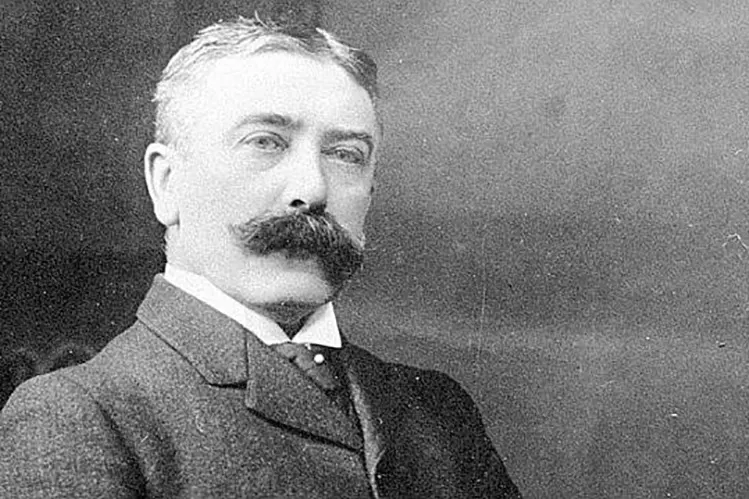JOKES & PUNS
Freud was inclined to understand the nature of jokes, wits and playing upon the words. The relation between psychoanalysis and linguistics isas close as that of the speech and the unconscious. Lacan used to recommend crossword to the analysts. From the very beginning in his correspondences with Fliess, Freud tried to find out the reason why playing upon the words caused laughter in human being. He began to prepare a collection of Jewish jokes, especially those concerning the Jewish marriage-brokers and beggers (respectively called in Yiddish Schadhen and Schnorrer). These comic stories reflected, as it were, the social conditions of Jewish people of central Europe. Freud found that beyond this particular social aspect there was something universal resembling the mechanisms of dream formation. This similitude is often mentioned in the Interpretation of Dreams.
Freud was interested in Lipps’ writings, a philosopher of late nineteenth century whose works were focused on psychic phenomena. It is said that Freudian conception as to identifie soul and unconscious is highly influenced by his reading of Lipps. At the beginning of Jokes and their relation to the unconscious he recognizes his dept to Lipps’ Komok und Humor.
According to Freud anyone who has had occasion to enquire from the literature of aesthetics and psychology the nature of jokes and the position they occupy will probably have to admit that jokes have not received nearly as much philosophical consideration as they deserve in view of the part they play in mental life. The first impression one derives from the literature is that it is quite impracticable to deal with jokes otherwise than in connection with the comic. A favorite definition of joking has long been the ability to find similarity between dissimilar things, that is, hidden similarities. The criteria and characteristics of jokes include: activity, relation to the content of our thoughts, the characteristic of playful judgment, the coupling of dissimilar things, contrasting ideas, sense in nonsense, the succession of bewilderment and enlightenment, the bringing forward of what is hidden, and the peculiar brevity of wit. We are entirely without insight into the connection that presumably exists between the separate determinants (i.e. what the brevity of a joke can have to do with its characteristic of being a playful judgment).
The character of a joke does not reside in the thought but in the technique. Examples are given of jokes in which the thought is condensed by introducing, as a substitute, a striking composite word (e.g. anecdotage for anecdote and dotage) which is unintelligible in itself but is immediately understood in its context. In related cases the substitute is not a composite word but a slight modification (e.g. tete-a-bete for tete-a-tete). In general, the slighter the modification, the better the joke. Condensation and modification involved in these types of jokes are compared to condensation and modification which occurs in dream-work.
The first thing that we have to learn is whether the process of condensation with substitute formation is to be discovered in every joke, and can therefore be regarded as a universal characteristic of the technique of jokes. Three examples are presented by Freud in Jokes in which substitute formation does not occur. In each of them, a name is used twice, once as a whole and again divided up into its separate syllables, which, when they are thus separated, give another sense. The multiple use of the same word, once as a whole and again in the syllables into which it falls, is the first instance we have come across of a technique differing from that of condensation. The cases of multiple use, which can also be brought together under the title of double meaning, can easily be divided into subclasses: 1) cases of the double meaning of a name and of a thing denoted by it; 2) double meaning arising from the literal and metaphorical meanings of a word; and 3) double meaning proper, or play upon words.
The different joke techniques are summarized as follows: condensation, with formation of composite word or with modification; the multiple use of the same material as a whole and in parts, in a different order, with slight modification, and of the same words full and empty; and double meaning as a name and as a thing, metaphorical and literal meanings, double meaning proper (play upon words), double entendre, and double meaning with an allusion. The multiple use of the same material is only a special case of condensation; play upon words is nothing other than a condensation without substitute formation. All these techniques are dominated by a tendency to compression, or rather to saving (economy). The most numerous group of jokes is influenced by the contempt with which they are regarded. This kind is generally known as puns and passes as the lowest form of verbal joke, probably because it can be made with the least trouble. Puns make the least demand on the technique of expression, just as the play upon words proper makes the highest. Puns merely form a subspecies of the group which reaches its peak in the play upon words proper.
There are jokes whose technique resists almost any attempt to connect it with the groups (those derived from condensation, multiple use of the same material or double meaning) that have been considered. In the case of a displacement joke, the joke itself contains a train of thought in which a displacement has been accomplished. The displacement is part of the work which has created the joke; it is not part of the work necessary for understanding it. The technique of the nonsensical or absurd jokes consists in presenting something that is stupid and nonsensical, the sense of which lies in the revelation and demonstration of something else that is stupid and nonsensical. Here Freud presents a number of displacement and nonsensical jokes.
The uncovering of psychical automatism is one of the techniques of the comic, just as is any kind of revelation or self-betrayal. The technique of this group of jokes lies in bringing forward faulty reasoning. Unification lies at the bottom of jokes that can be described as ready repartees. Repartee consists in the defense going to meet the aggression, in turning the tables on someone, or paying someone back in his own coin, that is, in establishing an unexpected unity between attack and counterattack. Unification has another, quite specially interesting technical instrument at its disposal: stringing things together with the conjunction ‘and’. If things are strung together in this way, it implies that they are connected: understanding it as so cannot be helped.
Freud presents examples of jokes in which the technique employed is “representation by the opposite”, e.g. representation of ugliness through resemblances to what is most beautiful. In some cases this technique can be combined with displacement. A related technique is the use of overstatement. Representation by the opposite is not confined to jokes but may be used in irony. Representation by something similar or akin forms the basis for another category of jokes. This technique is often complicated by allusion. The replacing element may be merely a resemblance in sound but, in contrast to puns, the resemblance in sound involves whole sentences or phrases rather than just 2 words. Another kind of allusion consists in omission; this type of joke often cannot be distinguished from condensation without formation of a substitute. Allusion, which is probably the commonest and most easily used method of joking and which forms a basis for most short4ived jokes found in conversations, can be described as indirect representation. Categories of jokes discussed so far which would fall into this category include faulty reasoning, unification, and representation by the opposite.
Analogy is a kind of indirect representation used by jokes. There are remarkably fine and effective examples of analogies that do not strike us as being jokes. There are also analogies which contain a striking juxtaposition, often a combination that sounds absurd, or which are replaced by something of the sort as the outcome of the analogy. A strange juxtaposition or the attribution of an absurd epithet can stand by itself as the outcome of an analogy. An analogy can in itself possess the characteristics of being a joke, without this impression being accounted for by a complication with one of the familiar joke techniques. Analogy is included among the species of indirect representation used by the joke technique.
Innocent or abstract jokes (both are nontendentious) do not have the same meaning as jokes that are trivial or lacking in substance; they merely connote the opposite of the tendentious jokes. An innocent joke may be of great substance, it may assert something of value. We receive from joking remarks a total impression in which we are unable to separate the share taken by the thought content from the share taken by the joke work. Where a joke is not an aim in itself (where it is not innocent), it is either a hostile joke (serving the purpose of aggressiveness, satire, or defense) or an obscene joke (serving the purpose of exposure). The technical species of the joke, whether it is a verbal or a conceptual joke, bears no relation to these 2 purposes. A tendentious joke calls for 3 people: in addition to the one who makes the joke, there must be a second who is taken as the object of the hostile or sexual aggressiveness, and a third in whom the joke’s aim of producing pleasure is fulfilled. When the first person finds his libidinal impulse inhibited by a woman, he develops a hostile trend against that second person and calls on the originally interfering third person as his ally. Through the first person’s smutty speech the woman is exposed before the third, who, as a listener, has now been bribed by the effortless satisfaction of his own libido. Thus jokes make possible the satisfaction of instinct (whether lustful or hostile) in the face of an obstacle which stands in the way. The obstacle in the way is woman’s incapacity to tolerate undisguised sexuality. This power which makes it difficult or impossible for women, and to a lesser degree for men as well, to enjoy undisguised obscenity is termed repression. Tendentious jokes have sources of pleasure at their disposal besides those open to innocent jokes, in which all the pleasure is in some way linked to their technique.
Hostile impulses against our fellow men have always been subject to the same restrictions, the same progressive repression, as our sexual urges. A joke will allow us to exploit something ridiculous in our enemy which we could not, on account of obstacles in the way, bring forward openly or consciously; here again the joke will evade restrictions and open sources of pleasure that have become inaccessible. Tendentious jokes are highly suitable for attacks on the great, the dignified and the mighty, who are protected by internal inhibition and external circumstances from direct disparagement. Among the institutions which cynical jokes are in the habit of attacking none is more important or more strictly guarded by oral regulations than the institution of marriage, at which the majority of cynical jokes are aimed. There is no more personal claim than that for sexual freedom and at no point has civilization tried to exercise more severe suppression than in the sphere of sexuality. A particularly favorable occasion for tendentious jokes is presented when the intended rebellious criticism is directed against the subject himself, or against someone in whom the subject has a share, a collective person, (the subject’s own nation, for instance). Jokes that attack not a person or an institution but the certainty of our knowledge itself are called skeptical jokes.
The mechanism of pleasure and the psychogenesis of jokes is discussed. The pleasure in the case of a tendentious joke arises from a purpose being satisfied whose satisfaction would otherwise not have taken place. The techniques of jokes are themselves sources of pleasure. In one group of jokes, the technique consists in focusing our psychical attitude upon the sound of the word instead of upon its meaning. A second group of technical methods used in jokes (unification, similarity of sound, multiple use, modification of familiar phrases, allusions to quotations) has as the common characteristic the fact that in each of them something familiar is rediscovered. This is the basis for the use of another technical resource in jokes, topicality. The third group of joke techniques for the most part conceptual jokes, which comprises faulty thinking, displacements, absurdity, representation by the opposite, etc., may at first glance seem to bear a special impress and to have no kinship with the techniques of rediscovery of what is familiar or the replacement of object associations by word associations. Nevertheless the theory of economy or relief in psychical expenditure applies here. The first and third of these groups, the replacement of thing associations by word associations and the use of absurdity, can be brought together as reestablishing old liberties and getting rid of the burden of intellectual upbringing; they are psychical reliefs, which can be contrasted with the economizing which constitutes the technique of the second group. From these 2 principles all the techniques of jokes, and accordingly all pleasure from these techniques, are derived: relief from psychical expenditure that is already there and economizing in psychical expenditure that is only about to be called for.
The relation of jokes to dreams and to the unconscious is discussed. Thought transformation with a view to the possibility of representation, condensation and displacement are the 3 major achievements that may be ascribed to the dream work. The characteristics and effects of jokes are linked with certain forms of expression or technical methods, among which the most striking are condensation, displacement, and indirect representation. Processes, however, which lead to the same results have become known to us as peculiarities of the dream work. Jokes are formed as a preconscious thought is given over for a moment to unconscious revision and the outcome of this is at once grasped by conscious perception. The characteristics of jokes which can be referred to their formation in the unconscious are presented: 1) the peculiar brevity of jokes; 2) displacements; 3) representation by the opposite; and 4) the use of nonsense. Dreams serve predominantly for the avoidance of unpleasure, jokes for the attainment of pleasure; but all our mental activities converge in these 2 aims.
A chance exposure has a comic effect on us because we compare the ease with which we have enjoyed the sight with the great expenditure which would otherwise be required for reaching this end. Every exposure of which we are made the spectator by a third person is equivalent to the exposed person being made comic. The comic difference is found either by a comparison between another person and oneself, or by a comparison entirely within the other person, or by a comparison entirely within oneself. The first case includes the comic of movement and form, of mental functioning and of character. The second case includes the most numerous possibilities, the comic of situation, of exaggeration, of mimicry, of degradation, and of unmasking. The comic of expectation, the third case is the remotest in children. The release of distressing affects is the greatest obstacle to the emergence of the comic. Humor is the most easily satisfied among the species of comic. It completes its course within a single person. An economy of pity is one of the most frequent sources of humourous pleasure. The pleasure in jokes arises from an economy in expenditure upon inhibition, the pleasure in the comic from an economy in expenditure upon ideation (upon cathexis) and the pleasure in humor from an economy in expenditure upon feeling.
